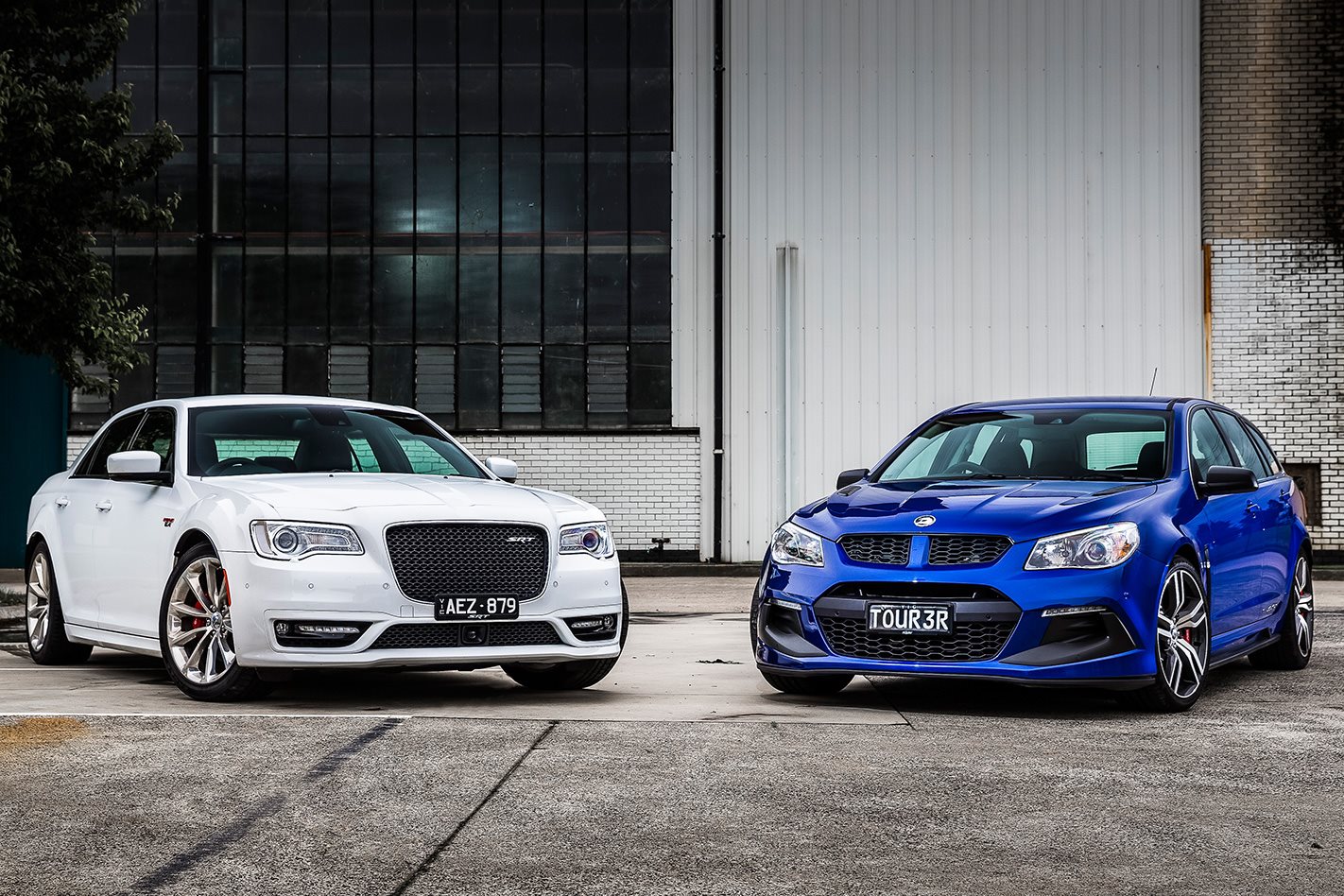America owes Australia. No, really, when you think about it, the US has a lot to thank its pals Down Under for.
Whenever it goes to war we’re there to help out, we ship our finest talent over – Cate Blanchett, Geoffrey Rush, Eric Bana, Hugh Jackman and more – to make its movies better and we’re happy to lend a hand on the car front, too.
The Monaro and latest VF Commodore made their way Stateside, as did the Caprice, which saved US police officers from enduring any more motoring misery from behind the wheel of ancient Ford Crown Victorias.
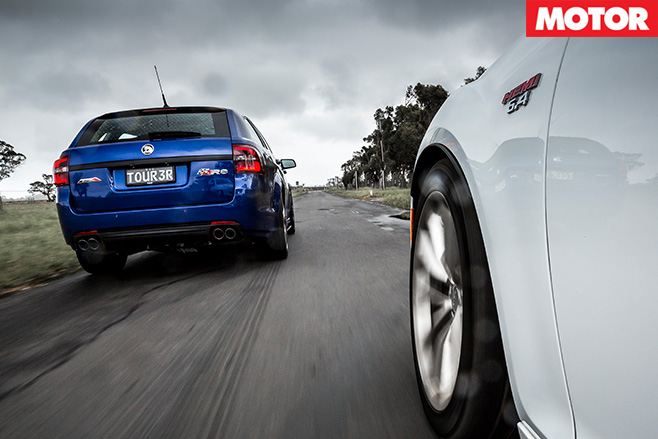
But we’re glad it has, because when it comes to V8 rear-drive muscle cars, there’s no such thing as too much choice.
It’s not the only gift we can enjoy from Uncle Sam, however. As you’re probably aware by now, as part of its MY16 Gen-F2 update, HSV has installed the 6.2-litre supercharged LSA V8, originally found in the Camaro ZL-1 and Cadillac CTS-V models Stateside, under the bonnet of its Clubsport, Maloo and Senator models.

Having driven the sedan last month and the Maloo on page 42, we chose the wagon for this comparison because, well, we wanted to; since when is an excuse needed to drive a 400kW station wagon?
Sadly, Chrysler no longer offers a wagon option for its 300 SRT. Buyers wanting Hemi-powered practicality can always stump up $84,000 for a Jeep Grand Cherokee SRT, however unless you really need the extra load space the Chrysler is the car to have, not least because you can enjoy the same 6.4-litre V8 for just $59,000.
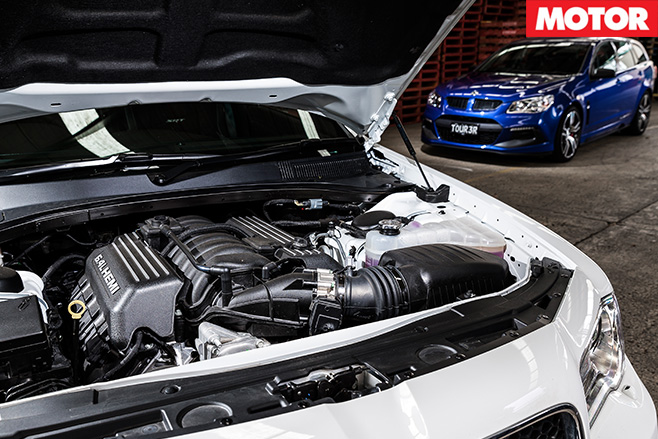
Okay, so the interior doesn’t set any new benchmarks in material quality or fit and finish, but the amount of equipment contained within is just staggering.
Here is just a selection: heated and cooled front seats; heated rear seats; leather and alcantara upholstery; 19-speaker Harmon Kardon stereo; bi-Xenon headlights with adaptive cornering and auto high-beam functions; SRT Performance Pages with lap and acceleration timer; and a full suite of active safety gear, including blind-spot monitoring, adaptive cruise control, forward collision warning and lane departure warning.
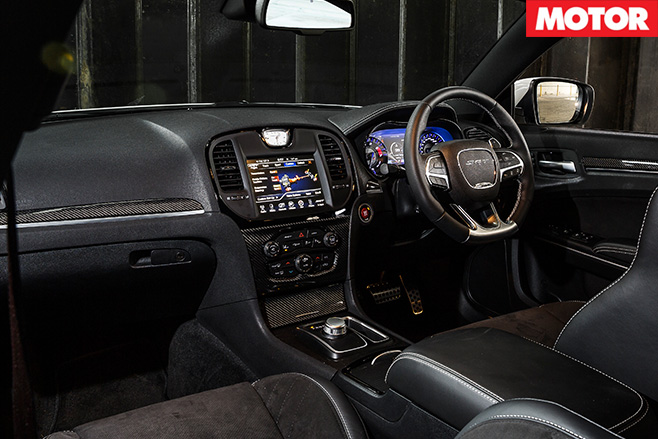
The HSV can’t pull the same trick but offers similar levels of active safety tech, though most keen drivers will turn the systems off, their over-zealousness – emergency brake is particularly keen to activate for no reason – an irritation if you are actually paying attention.
While the Clubsport’s interior lacks the toys (heated and cooled seats) and tinsel (carbonfibre trim) of the Chrysler, it counters with a better driving position and head-up display, though it would be worth playing with trim colours to break up the overwhelming greyness of our test car.
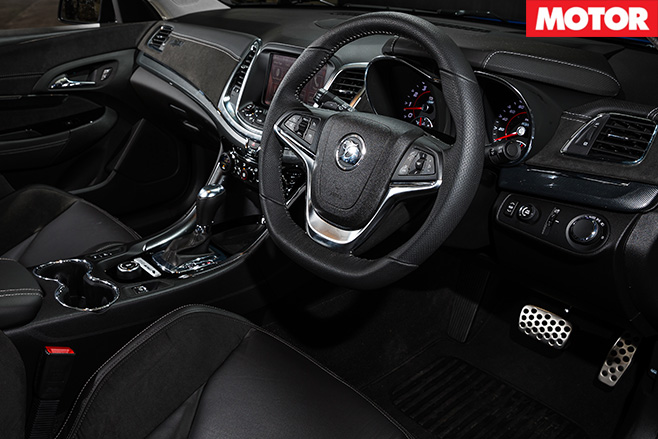
It may be 30kW/69Nm down and weigh a portly 1974kg – a 67kg penalty over the Clubsport LSA sedan and 71kg more than the GTS – but the R8 LSA Tourer hits 100km/h in 4.54sec on its way to a 12.67sec quarter mile at 180.75km/h.
When it comes to bang for your buck, however, the Chrysler is king. At 1965kg it, too, is a heavy beast, yet it scorches to 100km/h in just 4.49sec and through 400m in 12.60sec at 180.54km/h, though if you believe the onboard computer it takes just 4.3sec and 12.3sec respectively, which illustrates the difference between DriftBox and drag strip timing.
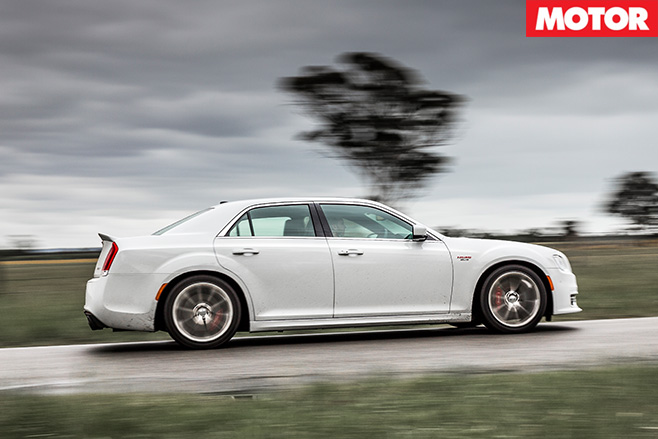
In contrast, the Clubsport feels almost lazy in comparison, though lazy is the wrong adjective for a car that can accelerate so effortlessly and rapidly. The speed in each gear inexorably builds (and builds, and builds), the exhaust note hardening from a guttural growl – the kind you get from an angry dog warning you to not step any closer – to an enraged roar in the process.

Traction is strong, even in the wet. In the dry it takes a fairly concerted effort to break the rear free, and when it does so it’s progressive and easily caught with a flick of opposite lock.
You could quite easily drive it without fear sans any electronic aids, though the Performance setting in the Driver Preference Dial is so good you might as well leave the safety net in place. The steering is weighty, perhaps slightly excessively so, and if we’re nit-picking it could be a bit quicker off-centre, but you can still place what is a very large car very accurately.
It feels to sit quite flat in corners; the LSA models’ stiffer spring and damper rates have largely eradicated the Commodore Redline’s off-throttle playfulness, but perhaps that’s no bad thing given the Tourer weighs well over two tonnes with a driver and a full tank of fuel on board.
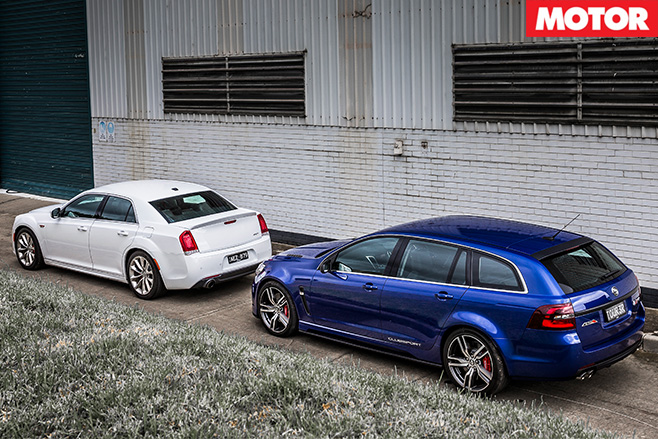
In terms of cornering behaviour, the 300 SRT feels remarkably similar to its antipodean rival. Both cars are essentially neutral, with mid-corner understeer if you carry too much speed on entry and oversteer on exit if you use too much throttle.
The Chrysler’s ultimate limits are lower thanks to 245/45 R20 Goodyear Eagle F1 rubber all ’round versus the HSV’s 255/35 R20 (front) and 275/35 R20 (rear) Continentals, though the flip side of that is the harder Goodyears will cop more punishment than the sticky but soft Contis.
That said, it’s remarkable how good the big 300 is to drive hard. Looking at it you’d assume it’s going to handle with all the poise and finesse of a Melbourne tram, but while it’s never going to qualify for Swan Lake, it’s very capable and very friendly at the limit.
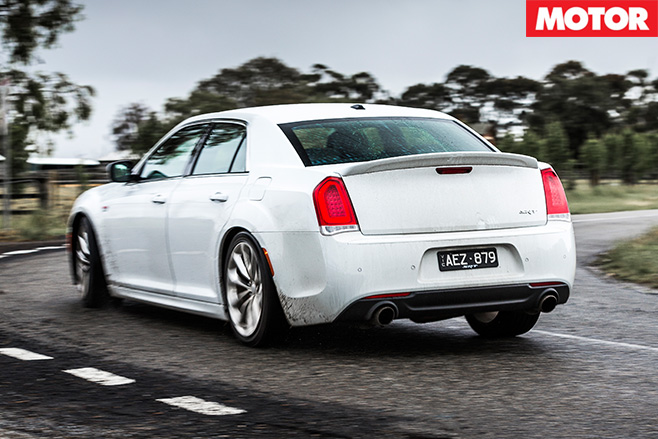
Likewise, the new electrically-assisted power steering is light and vague in Street, but Sport offers enough weight to lean against – if little in the way of actual feel. Track suspension and steering is probably a step too far for most people on the road, but the Track ESP setting is brilliant.
Lenient yet subtle in its interventions, if you need more slip angle than this on the street you’re going to end up on A Current Affair, though few cars are easier to drive extremely sideways if you have the venue and inclination to do so.
What ultimately costs the Chrysler, however, is its lack of composure at the limit. Up to around seven or eight-tenths it’s all pretty happy, but push harder and you start to wish for a bit more control and feedback.
Some issues are ergonomic; you sit high in the driver’s seat, the paddle shifters are awkwardly placed and the throttle action is incredibly long. But the main problem is that the 300 SRT always feels like an extremely big car, never shrinking around you in the same manner as the Clubsport.
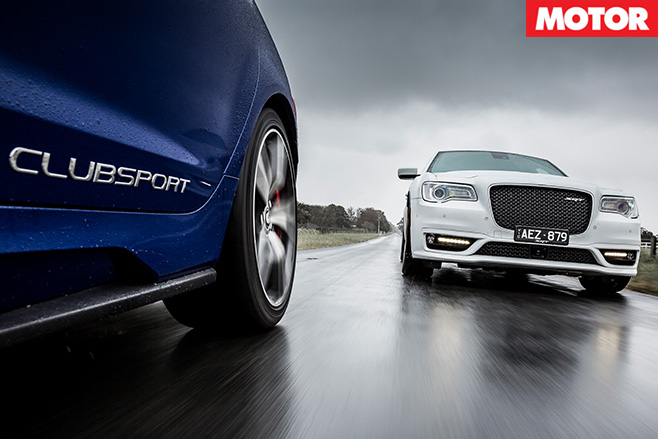
On the other hand, it doesn’t get much more sensible than a Commodore wagon, though few will mistake the Clubsport R8 LSA Tourer for your run-of-the-mill Holden, especially once it starts up with a thunderous boom.
We reckon it looks awesome, understated yet aggressive, especially in HSV’s new Slipstream blue. And the new tail-lights, bonnet vents and sculpted side skirts freshen up its styling.
Between this, AMG’s C63 S Estate and CLA45 Shooting Brake, Audi’s RS6 and VW’s Golf R Wagon, we’re in a golden age of practical performance cars, which makes you wonder why anyone would want to buy an SUV. No sportified off-roader drives as well as the Clubsport, and it’s this dynamic prowess that gives the HSV the win here.
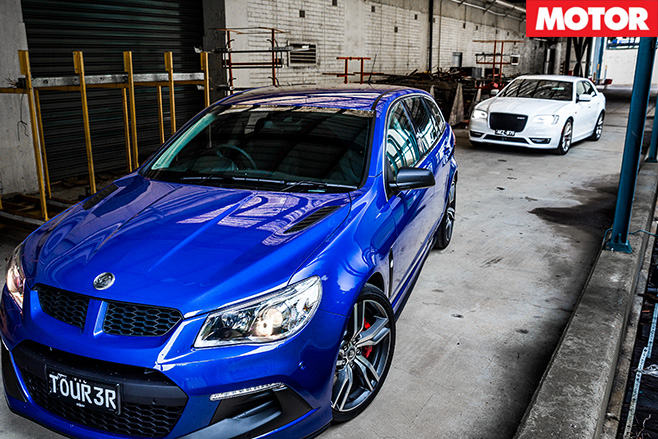
Not everyone is going to be a fan of the bling, but for those who are – people who wish their lives were more like The Sopranos, presumably – it’s a fine alternative to the traditional muscle car choices. We’re not square yet, America, but this is a good start.
| u00a0 | u00a0 | HSV CLUBSPORT R8 LSA TOURER | u00a0 | CHRYSLER 300 SRT |
| Body | u00a0 | 5-door, 5-seat wagon | u00a0 | 4-door, 5-seat sedan |
| Drive | u00a0 | rear-wheel | u00a0 | rear-wheel |
| Engine | u00a0 | 6162cc V8, OHV, 16v, supercharger | u00a0 | 6417c V8, OHV, 16v |
| Bore/Stroke | u00a0 | 103.25 x 92.0mm | u00a0 | 103.9 x 94.5mm |
| Compression | u00a0 | 9.0:1 | u00a0 | 10.9:1 |
| Power | u00a0 | 400kW @ 6150rpm | u00a0 | 350kW @ 6150rpm |
| Torque | u00a0 | 671Nm @ 4200rpm | u00a0 | 637Nm @ 4250rpm |
| Power/Weight | u00a0 | 203kW/tonne | u00a0 | 178kW/tonne |
| Transmission | u00a0 | 6-speed automatic | u00a0 | 8-speed automatic |
| Weight | u00a0 | 1974kg | u00a0 | 1965kg |
| Suspension (f) | u00a0 | struts, coil springs, anti-roll bar | u00a0 | double A-arms, coil springs, adaptive dampers, anti-roll bar |
| Suspension(r) | u00a0 | multi-links, coil springs, anti-roll bar | u00a0 | multi-links, coil springs, adaptive dampers, anti-roll bar |
| L/W/H | u00a0 | 4978/1899/1454mm | u00a0 | 5089/1902/1478mm |
| Wheelbase | u00a0 | 2915mm | u00a0 | 3052mm |
| Tracks | u00a0 | 1616/1590mm (f/r) | u00a0 | 1621/1639mm (f/r) |
| Steering | u00a0 | electrically-assisted rack-and-pinion | u00a0 | electrically-assisted rack-and-pinion |
| Brakes(f) | u00a0 | 367mm ventilated discs, 4-piston calipers | u00a0 | 360mm ventilated discs, 4-piston calipers |
| Brakes(r) | u00a0 | 372mm solid discs, 4-piston calipers | u00a0 | 350mm ventilated discs, 4-piston calipers |
| Wheels | u00a0 | 20.0 x 8.5-inch (f); 20.0 x 9.5-inch (r) | u00a0 | 20.0 x 9.0-inch (f/r) |
| Tyre Sizes | u00a0 | 255/35 ZR20 (f); 275/35 ZR20 (r) | u00a0 | 245/45 ZR20 (f/r)u00a0 |
| Tyre Sizes | u00a0 | Continental ContiSportContact5P | u00a0 | Goodyear Eagle F1 |
| Price as tested | u00a0 | $85,990 | u00a0 | $69,000 |
| Pros | u00a0 | Supercharged grunt; polished dynamics | u00a0 | Searing pace; value; looks; ride comfort |
| Cons | u00a0 | Weight; firm ride; outrageous thirst | u00a0 | Steering better but not great; gearbox could be sharper |


